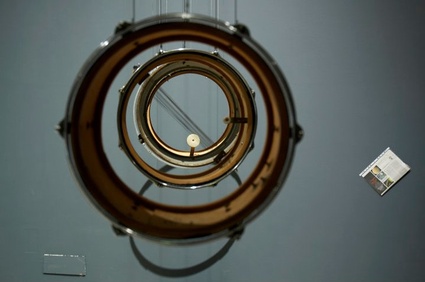 Damian Ortega, The Independent. Courtesy Barbican Art Gallery. Photo credit: Eliot Wyman
Damian Ortega, The Independent. Courtesy Barbican Art Gallery. Photo credit: Eliot Wyman
Every day from 29 August to 27 September, Mexican artist Damián Ortega has worked on a new artwork that responded directly to a news item, a photography, a cartoon or graphics he had found that day in the press. The sculptures and installations are now on show in The Curve, an exhibition space which as its name indicates, is shaped like a long, narrow arc. I can’t think of any space more challenging to curate and fill in.
The pieces of news that aroused Ortega’s curiosity ranged from the dramatic and international (the BP oil spill, the ordeal of Chilean miners, border crossing in Mexico, floods in Pakistan), to mundane stories (Ryanair boss professing that global warming is a myth, a football match, even an advert for men’s leather shoes) and science columns (an essay on gravitational wave.) Ortega had to work like a journalist, responding fast to the dramas, scandals, and local oddities that hit the news day after day. A method clearly at odds with the lengthier gestational and production time an artist is used to.
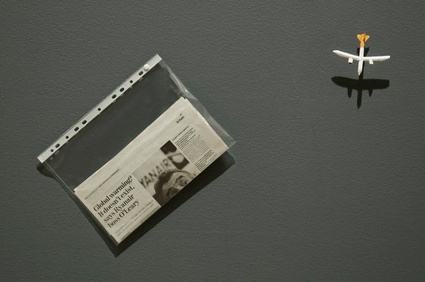 Damian Ortega, The Independent. Courtesy Barbican Art Gallery. Photo credit: Eliot Wyman
Damian Ortega, The Independent. Courtesy Barbican Art Gallery. Photo credit: Eliot Wyman
A picture illustrating the plight of Pakistan flood survivors in The Independent…

inspired this sculpture:
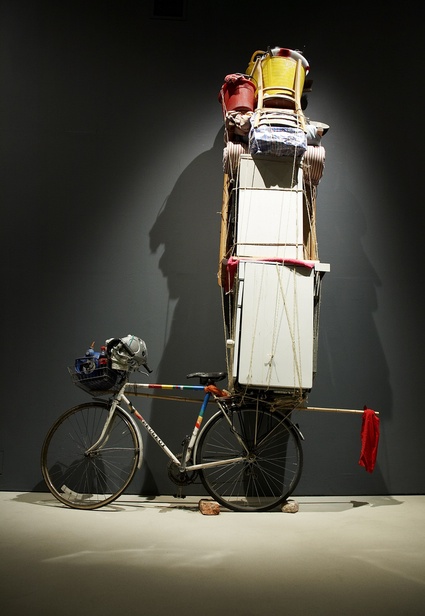 Damian Ortega, The Independent. Courtesy Barbican Art Gallery. Photo credit: Eliot Wyman
Damian Ortega, The Independent. Courtesy Barbican Art Gallery. Photo credit: Eliot Wyman
Although the items of news are only two months old, you can feel that the anxiety and urgency they used to carry have started to fade away. Such is the speed and volatility of the news.
Some of the works are the exploding structures we’ve come to expect from Ortega. After having see the image of a house in New Zealand damaged by an earthquake, he built this installation in which furniture hang above our head.
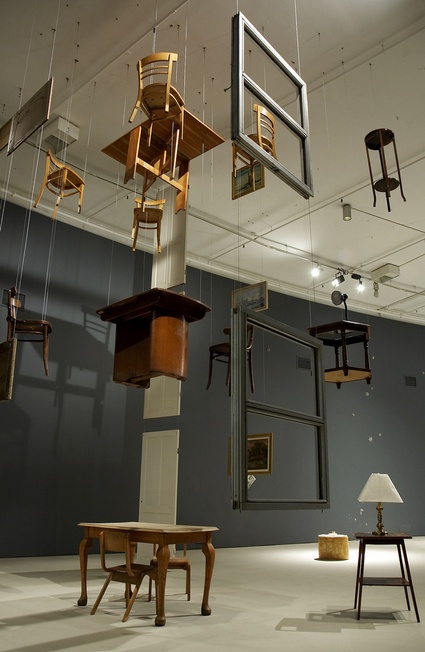 Damian Ortega, The Independent. Courtesy Barbican Art Gallery. Photo credit: Eliot Wyman
Damian Ortega, The Independent. Courtesy Barbican Art Gallery. Photo credit: Eliot Wyman
The dismantled drums and tyres responds to a scientific article on gravitational waves.
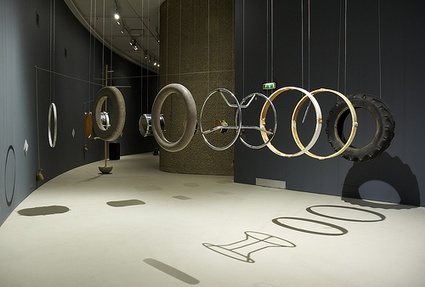 Damian Ortega, The Independent. Courtesy Barbican Art Gallery. Photo credit: Eliot Wyman
Damian Ortega, The Independent. Courtesy Barbican Art Gallery. Photo credit: Eliot Wyman
Although most of the news Ortega picked up come from British newspaper The Independent, the artist kept on following what made the headlines in his own country. One of the first works you meet in The Curve is Immigrant Song (10 August 2010), a 2 metre high by 7 metre long zigzagging wall whose sculptural form gives a heavy and powerful 3rd dimension to a graph recording the number of unauthorized migrants living in the US.
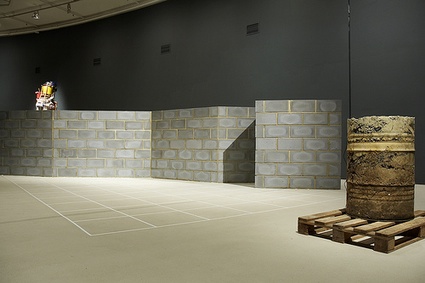 Damian Ortega, The Independent. Courtesy Barbican Art Gallery. Photo credit: Eliot Wyman
Damian Ortega, The Independent. Courtesy Barbican Art Gallery. Photo credit: Eliot Wyman
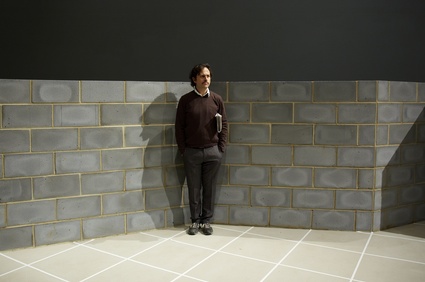 The artist in front of one of his works. Damian Ortega, The Independent. Courtesy Barbican Art Gallery. Photo credit: Eliot Wyman
The artist in front of one of his works. Damian Ortega, The Independent. Courtesy Barbican Art Gallery. Photo credit: Eliot Wyman
I’ll end up with a quote from an interview Ortega had with Alona Pardo (available in the small newspaper distributed in the gallery) because i couldn’t agree more with his opinion:
Ironic as it is, I think it’s important to stress that i’m not a huge fan of political art. I think it is too demagogic. Of course there are some very strong overtly political work, which is key to certain moments in history. I particularly like prints and graphic propagandist work. Work which is strongly rooted in political activism and seeking out real social change, such as the leaflets and flyers produced by the Black Panthers during the late 1960s.
But i think political work seen in the context of a gallery is completely neutralised and overprotected.
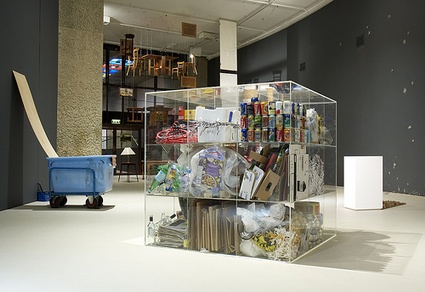 Damian Ortega, The Independent. Courtesy Barbican Art Gallery. Photo credit: Eliot Wyman
Damian Ortega, The Independent. Courtesy Barbican Art Gallery. Photo credit: Eliot Wyman
I was not allowed to take pictures, alas! Otherwise i’d have more to show you.
Damián Ortega, The Independent is open through 6 Feb 2011 at The Curve, Barbican Art Gallery, in London.
